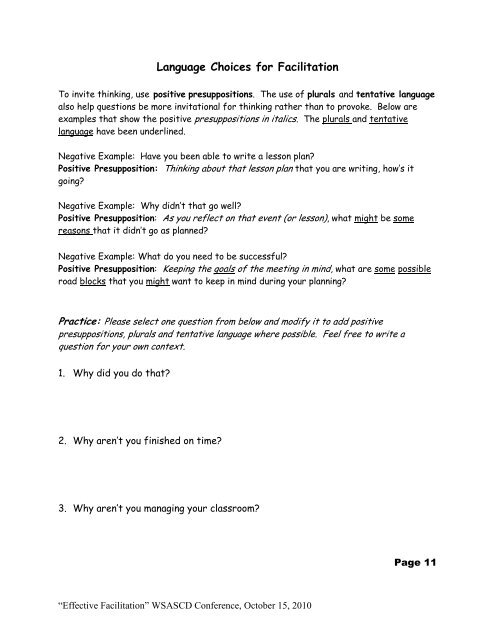3hPlSq
3hPlSq
3hPlSq
Create successful ePaper yourself
Turn your PDF publications into a flip-book with our unique Google optimized e-Paper software.
Language Choices for Facilitation<br />
To invite thinking, use positive presuppositions. The use of plurals and tentative language<br />
also help questions be more invitational for thinking rather than to provoke. Below are<br />
examples that show the positive presuppositions in italics. The plurals and tentative<br />
language have been underlined.<br />
Negative Example: Have you been able to write a lesson plan?<br />
Positive Presupposition: Thinking about that lesson plan that you are writing, how’s it<br />
going?<br />
Negative Example: Why didn’t that go well?<br />
Positive Presupposition: As you reflect on that event (or lesson), what might be some<br />
reasons that it didn’t go as planned?<br />
Negative Example: What do you need to be successful?<br />
Positive Presupposition: Keeping the goals of the meeting in mind, what are some possible<br />
road blocks that you might want to keep in mind during your planning?<br />
Practice: Please select one question from below and modify it to add positive<br />
presuppositions, plurals and tentative language where possible. Feel free to write a<br />
question for your own context.<br />
1. Why did you do that?<br />
2. Why aren’t you finished on time?<br />
3. Why aren’t you managing your classroom?<br />
Page 11<br />
“Effective Facilitation” WSASCD Conference, October 15, 2010


